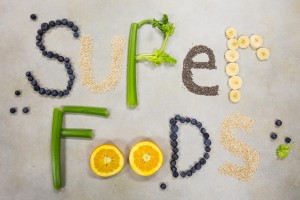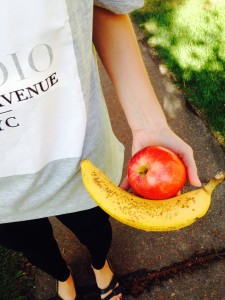
A growing number of foods labeled “superfoods” are said to fight cancer and aging. However, there is little quantifiable evidence to support these claims, leaving consumers to wonder if they are truly getting super health benefits or just paying for super overpriced food.
The skinny on superfoods
Superfoods are mostly plant based but can include fish, dairy and seeds thought to be nutritionally dense. According to Global Industry Analysts, the global market for superfoods is expected to reach $130 billion this year.
The term “superfood” is not regulated by the U.S. Food and Drug Administration, so marketers can use the phrase freely. The FDA has not run tests to measure the superiority of one health food to another.
Some superfoods include dark chocolate, green tea, oily fish, beetroot and wheatgrass. Woman’s Day released their list of 52 Best Superfoods last April, and some are more familiar than others.
Labeling foods as superfoods can attract consumers, but the benefits may be few and far between. Superfoods are often advertised as nutritionally superior to other foods, but BYU nutrition professor Merrill Christensen said he believes marketers may be falsely advertising.
“Where are you going to get your health information? Blogs, television, celebrities? What do they know? As for me, I’m going to stick to the scientific facts,” Christensen said.
The use of the term “superfood” is largely a marketing tool that scientists and dietitians tend to stay away from.
“We need nutrients in order to survive. Without them, we die,” Christensen said. “Superfoods aren’t nutritionally superior because it’s the phytochemicals, or other chemicals found in foods, that make them beneficial. These phytochemicals, such as the ability to lower blood pressure, are added benefits, but are not absolutely essential to survive.”
Battle of the berries
Goji and acai are two trendy and exotic berries that claim to have amazing health benefits.
Goji berries are red berries grown and harvested in China, and have been part of traditional Chinese medicine for centuries. Goji berries are eaten in dried or juiced form. These berries are high in B vitamins and supposedly boost immunity, prevent heart disease and improve life expectancy.
However, the British Dietetic Association argues that one must drink at least 13 servings of goji berry juice to get as many antioxidants as one would get by eating a large red apple.

Still, some consumers insist on spending as much as $15 a pound for goji berries while a pound of large Red Delicious apples cost only $1.50.
“I think we are brainwashed to think that because something is more expensive, it must be better or healthier for us,” said Karina Osgood, a BYU student who shops at the Sprouts health store in Orem. “I know I’m not the only one who has had this mentality. I guess it goes to show that it’s true: an apple a day keeps the doctor away.”
Acai berries are also trendy and expensive. Acai first gained popularity in the United States after Dr. Mehmet Oz, cardiothoracic surgeon and television figure, appeared on the Oprah Winfrey show in 2009 and claimed that acai improves skin health, fights against aging and aids in weight loss.
Many acai companies then used Winfrey and Oz as endorsements of their products. Winfrey and Oz sued more than 40 companies for illegally using their names to sell products. Oz told Good Morning America about many false health products, including scamming acai companies.
The acai bowl is a trendy, blended treat made from frozen acai berries, often topped with coconut and fruit. Five Provo stores make this treat, including Jamba Juice. A 24-ounce bowl has 162 grams of carbs, 108 grams of sugar and 830 calories.
“Knowing the nutrition facts, it’s actually shocking to see how many customers come in to get their daily acai bowl,” Jamba Juice manager Tressie Kendrick said. “It’s such a trendy thing, and people think they are cheating the system by eating a 100 percent healthy treat, but fruits have a lot of carbs and sugar.”
A cautionary tale
Superfoods are praised for their age-defying and heart-strengthening abilities. From exotic berries to lentils and kale, superfoods are taking over the health nut’s pantry. However, dietitians warn against the dangers of the superfood trend.
One danger is having a limited diet consisting solely on superfoods. According to registered dietitian and BYU professor Rickelle Richards, there is nothing “super” about a diet of this nature.
“Science supports following principles of the USDA’s ChooseMyPlate, which emphasizes balance, variety, moderation, adequacy and portion control in order to prevent chronic disease and promote overall health. Focusing on a few set types of foods does not meet these guidelines,” Richards said.
The superfood trend, even with the healthiest of intentions, can lead to detrimental effects if a balanced diet is not maintained.
“Some of the substances found in foods labeled as superfoods can be beneficial towards health, but as far as fads go, they do seem to come and go,” Richards said. “Ultimately, the core principles of ChooseMyPlate are based on science and will continue to be what is recommended by dietitians (and) nutritionists.”




